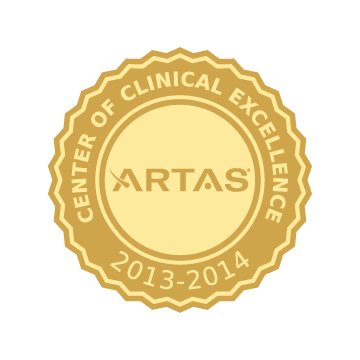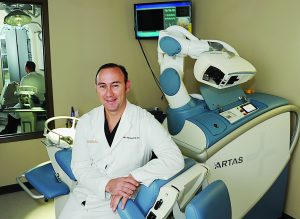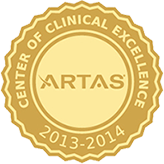

New Hair Transplantation Technology Opens Path to the Future
In recent years, surgical hair transplantation has been going through a significant but quiet revolution. Follicular Unit Hair Transplantation, the standard strip excision method that is still widely used, and the more minimally invasive Follicular Unit Extraction (FUE) approaches are being challenged by a technology from Restoration Robotics, Inc. (San Jose, Calif.), that automates the grafting process with more precision than is possible using manual FUE techniques. Lately, this company has signaled that this new approach to hair restoration is catching on by announcing new features for its ARTAS Robotic system as well as a new marketing / outreach program to help physicians attract and retain new patients.
The ARTAS Robotic System Heralds a Paradigm Shift in Hair Restoration Procedures
By Jeffrey Frentzen, Executive Editor
The ARTAS Robotic System employs a minimally invasive dissection punch process using an image- guided robotic arm. The system harvests follicular units from the patient’s donor area, exceeding manual FUE in terms of precision, control, reproducibility and efficiency, as well as eradicates the problem of physician fatigue.
The ARTAS easy-to-learn, programmable and automated robotics-based approach frees the practitioner to focus on the artistry of the procedure, as well as leave patients with virtually no scarring and minimal downtime after the work is done.
“There is no doubt that the ARTAS system is precipitating a paradigm shift,” expressed Mark A. Bishara, M.D., a cosmetic surgeon based in Mansfield, Tex. “For physicians and in particularly hair transplant surgeons who are only doing the strip based procedure and do not really do FUE, from hitting the ground they will be much more efficient at using a robot than if they would try to go back and learn to fine tune the eye-to-hand coordination type of skill necessary for doing manual procedures. The ARTAS system is definitely going to fulfill different voids in various practices.”
Increasingly, cosmetic surgeons and dermatologists are investigating the ARTAS Robotic System, noted Tim Parkyn, Senior Marketing Manager at Restoration Robotics. “They see the technology not only from the aspect of what they can do for the patient but also how they can adopt this into their practice. It is something they can learn and master in a decent amount of time, whereas the older techniques of hair transplantation are much more difficult to master.”
As with the introduction of any transformative technology the physician community takes its time to assess its value and potential for bringing in new patients. In the case of the ARTAS Robotic System, however, that time has come, according to Dr. Bishara. “I had a mixed practice of both cosmetic surgery and reconstructive surgery, along with hair restoration where we did around 50% strip procedures and 50% of FUE,” he said. “There is no doubt that with the results we’re achieving now with the robot, with the density and the overall hair maps, it is certainly acceptable to forego having a strip taken out of the back of your head. And that’s coming from somebody who did the manual transplantation procedure for several years before purchasing the robot.”
According to Gregory A. Turowski, M.D., Ph.D., F.A.C.S., a plastic surgeon in Skokie, Ill., the ARTAS system eases the tediousness of manual approaches and also dramatically speeds up the overall procedure. “I had used some FUE systems before, but they were manual systems and they require a lot of experience and concentration for long periods of time, and they were relatively slow,” he expressed. “The main advantages of using the ARTAS system is that it’s faster than doing transplantation manually, even for an experienced person. It doesn’t require a steep learning curve. One can become quite proficient compared with other approaches to FUE. More than that, I think it improves the quality of the grafts. The grafts are more consistently not denuded and not stripped from the surrounding tissue. This combination of features has us using the robotic system more than the manual technologies.”
Herbert S. Feinberg, M.D., a dermatologist in Englewood, N.J., said he implemented the ARTAS Robotic System in his practice in order to speed up the FUE process. “I found manual FUE too tedious. The ARTAS robot allowed me to perform FUE with more competencies that I could ever achieve manually. Certainly, it’s less physically demanding. I have now transplanted a number of patients who had traditional FUT or strip procedures in the past. All of them said they preferred the robotic transplant and they would never go back to a strip procedure if they needed more work in the future.”
In order to help physicians retain those patients and attracting new ones, Restoration Robotics has recently started to roll out a new Internet-based advertising and social media-based marketing and patient outreach program. “Hair transplantation is a unique market space,” said Mr. Parkyn. “Unlike the behavior of female patients that regularly return to their aesthetic physician, the typical male is not going to ask friends about where they go for hair transplantation. Identifying and marketing to these men, and getting our message in front of them can be a challenging task. A lot of men have certainly heard about hair transplantation, but they might not believe that it works.”
When people start noticing their hair loss, one of the key places they go for information are the online search engines, added Mr. Parkyn. “With this program, anyone searching online for any information in this category will find our information at the top of the search results page, encouraging them to response or look up a doctor to see. We can see expanding into other media as we go forward including banner ads and inbound marketing, as well as informational videos and infographics and trying to take a lot of the mystery out of hair transplantation. This kind of education will hopefully convince both men and women to seek out hair transplantation with one of the physicians that use the ARTAS system. We look to empower our physicians with this kind of information so that they can then take it out to the market.”
Any time industry comes out with a new technology that is relatively new to the consumer, the manufacturer bares a large majority of the burden to educate via public awareness and other campaigns. “Restoration Robotics has done exactly that,” noted Dr. Bishara. “The company has been getting the word out about the robotic technology. They’ve used cooperative advertisement agreements for more of the grassroots efforts, and also have taken on a large scale Google AdWords campaign for advertising the system and the procedure. So many times, industry will focus just on the providers and leave it up to them to educate patients and the public on new techniques and technologies. However, Restoration Robotics is taking the lead in this case, picking up the flag for practices that need marketing help in order to accomplish the goals of public outreach and letting them keep my marketing dollars.”
The company’s patient marketing program is a necessary component for practice success, noted Dr. Feinberg. “The materials provided by Restoration Robotics were well thought out and professionally presented. Most important to me was their focus on Internet presence. While most of my patients were referred from traditional sources, such as patient, doctor and barber referrals, the Internet has been the go to medium for most people seeking information about robotic transplants. For example, most of my consults have come to me via the Internet, such as the ARTAS website.”
Unless a physician already has the kind of extensive funds and access to an existing public relations firm or marketer, “You will need all the help you can get when you’re starting up something that’s so new, unique and somewhat mysterious to most people,” added Dr. Feinberg. “Today, to make yourself visible in what’s become a quite competitive environment you need professional assistance.”
One result of the company’s outreach would be to reel in physician naysayers, as more consumers learn about the ARTAS Robotic System and approach those physicians with questions about it. “These physicians will be compelled to start buying into the concept of non-manual grafting,” noted Dr. Bishara. “When you look at the naysayers you can scratch the surface and find out that there is usually some other type of fear motivating them to behave like that. This new technology needs to be truly embraced. Whenever you see such see such drastic game changing take place in medicine and other fields, as well, it induces a lot of fear. For instance, surgeons that are in different parts of their career and are not willing to switch over, and they feel that their craft is being lost or that all of their life’s efforts have gone by the wayside. They feel like they’re being replaced by something newer and better. But history has taught us that those that have been courageous enough to be early adopters, and embrace new things and new technology, and opening want to be at the forefront of change and participate in that change, are those that usually end up being laureates in the field.”
Dr. Turowski agreed that the ARTAS Robotic System confronts the hair restoration surgeon with a radically new procedure and technology, “It makes sense that at first people would be somewhat skeptical. And though public awareness is a key to the success of this system, public perception and physician acceptance has also changed during the past several months for one other important reason,” he said. “After two and a half years of doing the procedure, I and I’m sure others have demonstrated excellent results. We have the data and the before and afters to show to prospective patients to show that the procedure not only works but works well.”
In addition to offering global marketing support for practices, Restoration Robotics has also announced the ARTAS Hair Studio (AHS), which will improve the functionality of the robotic system by incorporating a new tablet-based interface that physicians can use in both patient consultations and in programming aspects of the hair restoration procedure.
The AHS allows physicians to use the tablet to create an onscreen photorealistic model of the patient’s head, explained Mr. Parkyn. “You can spin that head around in any direction and see it from any angle. The physician would literally draw the transplant, adjusting for lines, different levels of density in different areas of the head, etc.,” he stated. “We see it as an interactive tool, with which a physician can sit down with a patient and try out different simulations of what the patient’s hair transplant will look like. It allows the patient and the physician to explore and experiment and look at which way they want or need to go. Eventually that information can be fed to the robot, which would then perform a lot of the procedure based on the design the physician and patient have agreed upon.”
The new product will provide the patient with insight into what a hair restoration procedure can offer, noted Dr. Bishara. “In addition, the AHS turns out to be a great pre-op planning device. Physicians will be able to easily predict the amount of grafts needed for a certain operation. It is a good integrated approach as well as a good sales tool during the consult. It should not extend the time of the consult, but rather it does provide good information that is accurate.
For Dr. Feinberg, “The new AHS impressed me enough to put in my order. Anything that can enhance a procedure that is working so well now can only have a positive effect,” he expressed. “The robotic system is very high-tech and that has been a strong selling point for many of my patients. Any improvement can only create more interest and acceptance from and by patients. Also, for the ‘techie’ doctor — and I speak as one of that species — these enhancements can be very stimulating and certainly a lot of fun.”
The result of the company’s effort, in part, will be that the public’s perception of hair transplantation will move from older approaches to the automated robotic FUE method. “There are some patients that definitely benefit from the strip procedures,” noted Dr. Turowski, “but in my opinion if you have a choice of leaving a large scar on a patient’s skull versus no scar — or a nearly invisible little scars — it is a pretty simple choice.”
Bringing along the skeptics in the medical community will happen, as well, because of good patient outcomes and the kind of next-generational improvements in the technology represented by the ARTAS system.
“Every surgeon who has one will tell you why they have it, and the people that don’t have one are going to tell you why they don’t have one,” said Dr. Bishara. “They’ll give you an excuse on why they haven’t purchased one. The fact remains is that it’s worth making the switch to next generation. I think technology that a few years ago may have sounded very futuristic and unreal will become the new standard. Then, we will wonder how we could have lived without it.”
The thought process of arriving at that point varies depending upon the physician’s orientation, Dr. Bishara added. “For surgeons that have been doing hair and only do hair, increasing productivity and clinical outcomes using this system can be beneficial and even allow them to expand their aesthetic offerings. Those who embrace the new and explore the ARTAS system may ultimately be free to offer a wider scope of cosmetic surgery and other procedures, which can expand their business.”
THIS INFORMATION IS BROUGHT TO YOU COURTESY OF DR. MARK BISHARA AND THE PARAGON PLASTIC SURGERY & MED SPA
Get our Free Guide on Robotic Hair Restoration
Please also visit our Facebook page at Paragon Plastic Surgery and Medspa











